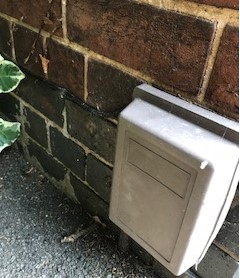Smart home security is a hot topic now. More and more homeowners are now looking to home security products to help secure their properties from a variety of threats – mainly burglary. They look to a multitude of options, from smart security cameras, to motion sensors, to microphones and more. Some of these can be effective, when used in the right scenarios, but this isn’t always the case.
So, what can be done to ensure your home is better protected when it comes to securing it with the IoT? Read below for our top four tips.

-
Protect important cabling
The majority of smart home technologies are based on Wi-Fi and Zigbee style protocols. Often, it’s Zigbee for inside the home networks, Wi-Fi for connection to the internet. When looking more closely at this, it’s clear that the Wi-fi-based internet connection is the weak spot in many home security products.
Many connected security camera products available in shops offer the chance for a home owner to monitor their house while they are on a beach on the other side of the world using their smart phone. This of course can be very appealing, and in some cases can provide peace of mind.
However, there is a critical and often-overlooked weakness… Follow the cable from your Wi-Fi router and at some point you will see it probably appears on an outside wall before vanishing into the ground. A pair of wire cutters, or something similar, make a very effective and low tech ‘denial of service’ attack for a couple of quid in this case.
As a result, you should endeavor to make sure you protect this cable otherwise every internet-based security product in your house could rendered interoperable. As an example, the picture below is from the front of a normal house. This box belongs to the ISP of the house… The cable is the internet connection. As you can see, it would take about two seconds to disable the connectivity, so make sure it’s protected!

-
Camera positioning
Once you’ve secured your cabling, protecting your connection, you need to think carefully about where your cameras are pointing. Firstly, it’s worth having a camera that points to your cabling; if a burglar is able to disable/sever the connection, at least you’ll be able to see who it was! This of course is why smart meters have only cellular connectivity – there are no visible parts to attack.
But cellular does comes at a cost as someone needs to pay for and manage the airtime. The return for the utilities is obvious and they pay for the connectivity (which you pay for in your electricity bill, a contract which already exists), the utilities also have the ability to ‘cut you off’ without sending a man in a van.
-
Contracts
If your internet-based security product does not come with a contract to manage it, this unfortunately makes it somewhat useless in certain situations. And this is often a problem when it comes to smart homes – nobody wants another bill, on top of the initial costs of the smart home technology.
A contract is crucial for an effective and consistent service that can be maintained, repaired if need be, or upgraded.
There are of course plenty of failed or flawed ‘over the counter’ assisted living, home security and convenience consumer IoT ideas. When they are based on cellular plans, they have failed to take off in the past due to need for a monthly contract. As MNOs (understandably) want to be paid for the traffic going through their networks, this increased cost has put off consumers.
On the flip side, when the solution is reliant on Wi-Fi, the services depend on the customer’s own equipment, passwords and attitude to cyber security. However, this comes with its own risks. If you know your neighbour’s Wi-Fi password (which plenty of people do), they’d need a second Wi-Fi network just for their home gadgets to stop you being able to switch all their lights off, or worse.
As you can appreciate, professional and industrial security services have cellular connectivity built in with a managed service for a reason. So, there are other technologies to help address this, but you will need to invest in a trusted provider.
-
End to end security
If your data is of critical importance, make sure you invest in end to end devices with robust security. This will likely include cryptography (but not always). This of course is of paramount importance when planning security from the ground up – for more information on how this is done and security by design, see our latest report on the key ingredients for IoT security success.
Let us know if you have any tips for your smart home either by tweeting us @GemaltoIoT or letting us know in the comments below.
And for more information on how our own ‘Out-of-the-Box’ Secure IoT Device Authentication for Cloud Platforms works, and to see how we secure the data-to-cloud journey, check out our step-by-step video, here.


